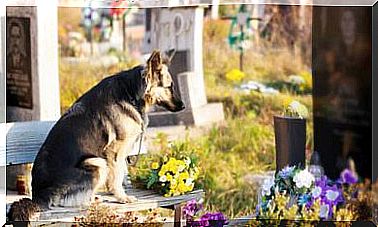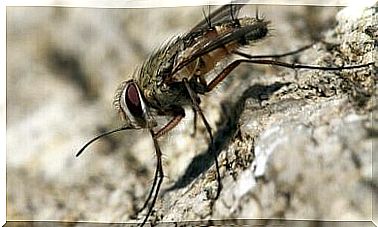The Legend Of The Swallows And The Thorns Of Christ

The relationship between the swallows and the thorns of Christ originates, according to legend, when the Messiah was on the cross. A legend that has endured over time, leading these birds to be associated with different religious beliefs.
According to the biblical account, Jesus of Nazareth, recognized by his followers as the Son of God, was sentenced to death. The Roman justice system condemned him to be crucified on Mount Calvary, because of what he was preaching.
Before the sentence was consummated, Jesus was whipped; according to what the Apostles told, a crown made of thorned brambles was placed on his head.
It is said that, once crucified, a group of swallows began to fly around Jesus, taking away the crown of thorns. Popular belief states that in this way the swallows relieved his suffering, which made the swallow a very respected bird by many.
Another biblical reference on this bird is the one we find in one of the Apocryphal Gospels written under the pseudonym of Thomas. It is told of how Jesus, when he was a child of just five years, was intent on playing on the banks of a stream; the little one collected some mud and with it he modeled and gave birth to twelve swallows.
Respect of believers for swallows
As we have seen, following what happened during the crucifixion, the swallows are considered sacred and are still respected by believers today. This respect implies the prohibition of killing them or destroying their nests, and it is often said that “the swallows belong to God”.

The legend of Christ’s swallows and thorns would even explain the anatomy of this migratory bird. Its black back would in fact be due to mourning for the death of the Son of God ; furthermore, their characteristic red spot on the chest is believed to be the consequence of the blood of Christ left on them as they removed the crown of thorns.
Furthermore, to avoid the possible desire to hunt this bird, it is believed that the meat has a decidedly bitter taste. The church and its followers explain how the bitter taste is a characteristic created precisely to discourage atheists from hunting and eating these birds.
The swallow nests enjoy a particular respect and protection, which is why they are not destroyed or removed. Thanks to this respect, nests abound in many places, especially on ecclesiastical buildings.
Behavior of the swallow
Even if it is a small bird, the swallow prefers to fly during the daytime, even if it risks becoming the booty of several predatory birds. Furthermore, it is a migratory bird, used to flying in groups.
Swallows live in colonies and this facilitates their migration and offers them greater protection. This coexistence in the colony also favors their reproduction as well as the making of nests.
The ideal habitat for swallows are spacious places, which they use as dormitories. They are very early birds and are used to cheer up the surrounding environment with their particular chirps, of different intensity and which manage to reach very acute tones.

In the morning they have a habit of moving their wings in a curious way, as if they were stretching, stretching their feathers and their little joints. A cheerful way to greet the new day.
When they take off, they first do so in small groups ; only later does the rest of the flock take off. They rise vertically with great rapidity.
At the end of the day they start looking for a place to build their nest ; meanwhile, they fly over the chosen area chirping intensely. Little by little, each swallow settles into the nest to rest, putting an end to an intense day of flight and preparing for the next day.
The legend of the Hill of the Swallow
A final legend associated with the swallows and thorns of Christ is the one that originates in Guadarrama, a Spanish town near Madrid. We are not sure of the origin of this legend, but it seems to have been born from the voice of the poet Francisco Acaso, a native of Cercedilla.
This legend tells of how the first swallow that removed one of the thorns from Christ’s forehead, immediately took it with him in a very long flight. He traveled, without ever leaving the thorn, 3,600 kilometers, from Mount Calvary to the Sierra de Guadarrama.
Once there, the swallow found rest on the top of a hill, where she died very tired and was covered with the local earth. For this reason, this hill located in the Nacerrada area of Madrid has been renamed as the Hill of the Swallow.









